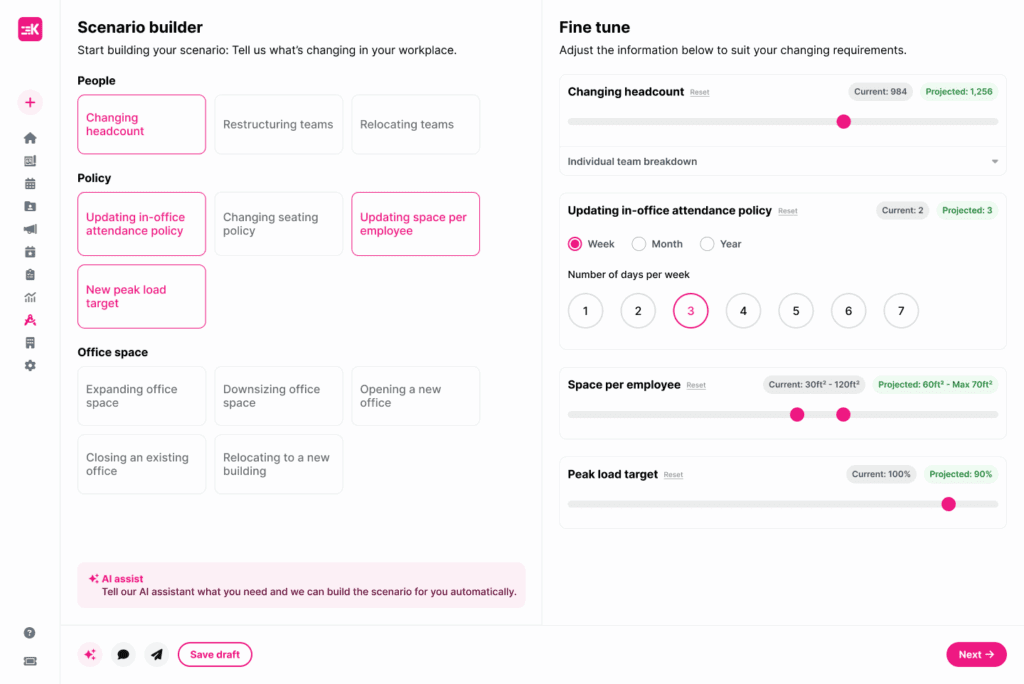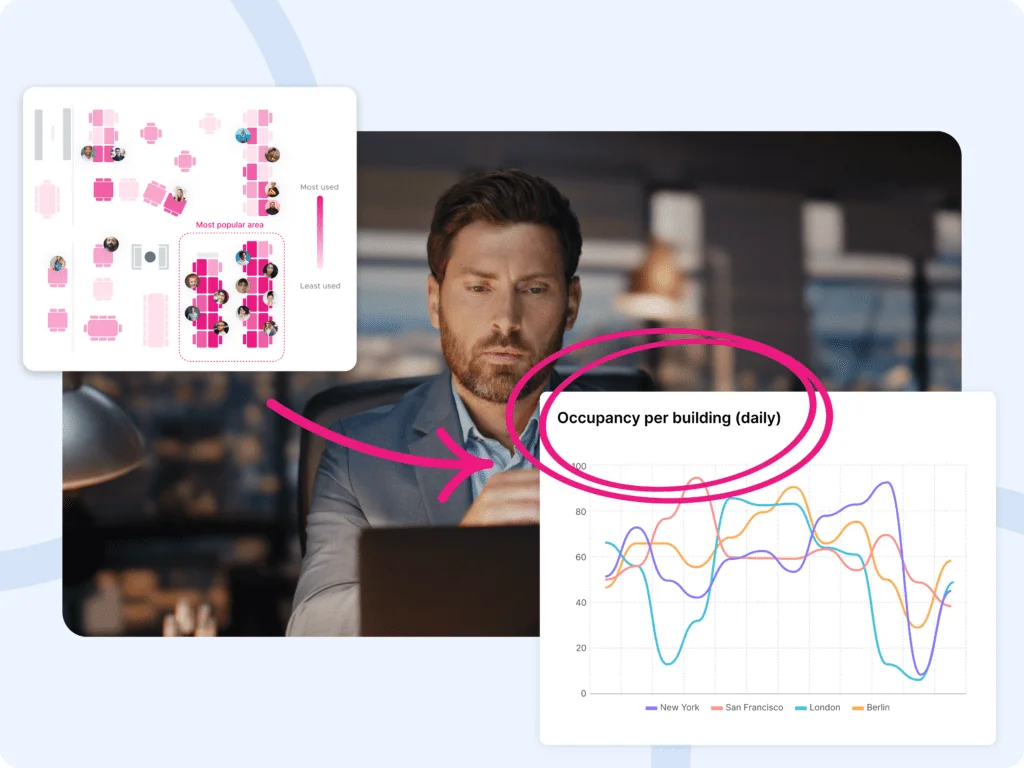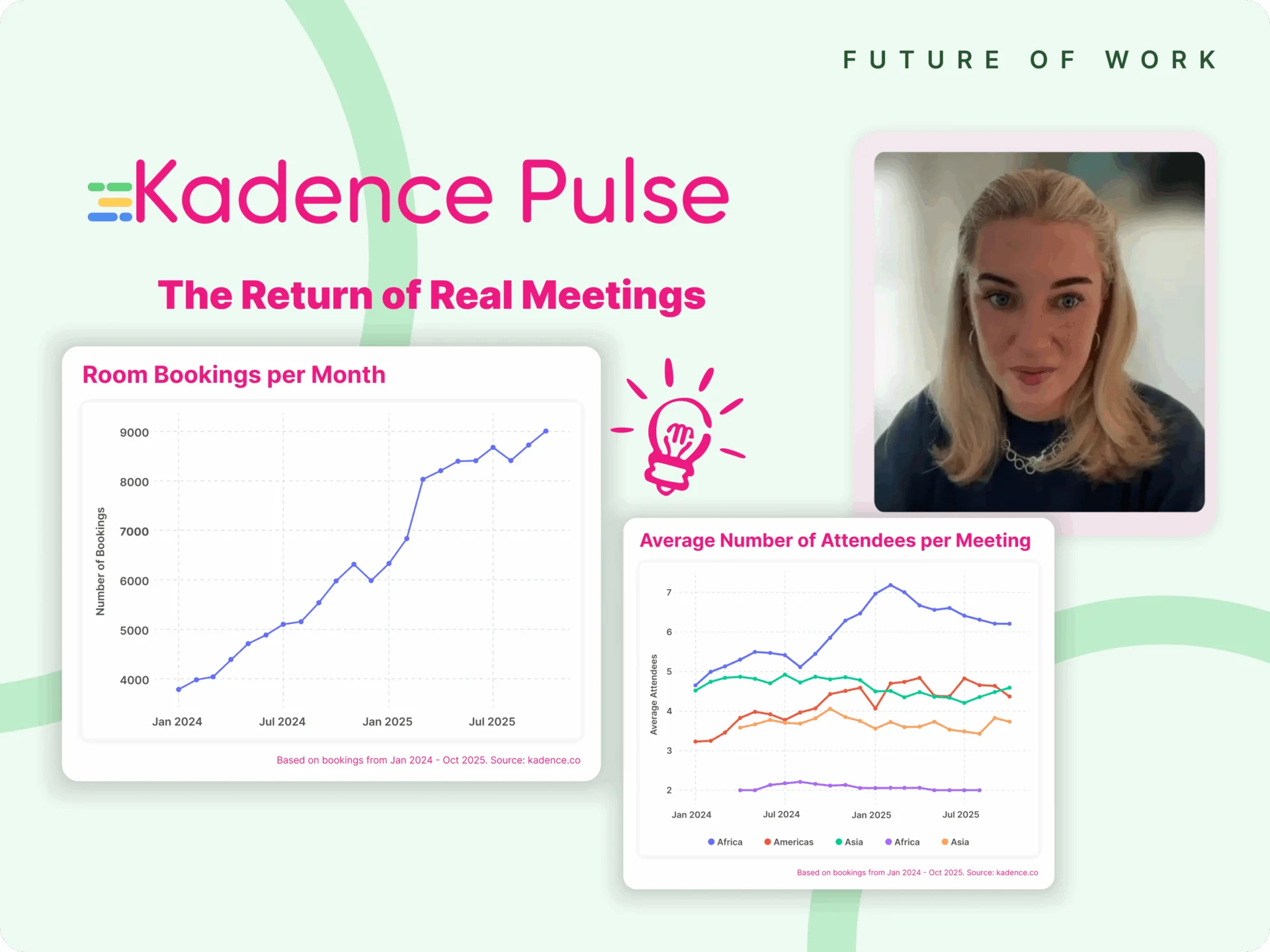If your teams still find each other by Slacking across floors, you’re paying a hallway tax. Collaboration breaks down not because people stop communicating but because the space around them no longer reflects how the business really works.
As organizations evolve, the relationships that drive outcomes often drift out of sync with their physical environment. Teams that once sat side by side are suddenly separated by floors, buildings, or even time zones. The result is slower decisions, duplicated effort, and a workplace that feels like a map of yesterday’s priorities.
The most forward-thinking companies are fixing that problem by reintroducing a principle that’s as old as work itself. It’s called team adjacency—the practice of deliberately placing connected teams near each other to shorten the distance between decisions.
Team adjacency is the missing layer of organizational architecture. It is how companies translate structure into flow, ensuring the design of their offices keeps pace with how their business operates in real time.

Why Adjacency Matters
When teams that rely on each other are physically close, coordination happens organically. Conversations replace tickets. Questions get answered faster. And collaboration stops depending on chance encounters.
Team adjacency creates measurable impact. It reduces handoffs, accelerates decision-making, and improves onboarding by making support and mentorship visible. Research at MIT shows that physical proximity boosts collaboration and idea flow. Teams seated closer together were far more likely to co-author papers or file patents than those farther apart. The office starts to perform like a network, not a maze.
This is not theory. It’s already happening in the world’s best workplaces.

What The World’s Best Workplaces Already Know
Some of the most successful organizations in the world have built team adjacency into the DNA of their offices. Their workplaces show how proximity, when designed intentionally, can drive speed and connection across every level of a business.
Google – Bay View Campus, Mountain View
Google designed its Bay View campus around team neighborhoods. Focus areas sit above and shared gathering spaces below, keeping teams close to their work while encouraging collisions. With Kadence SpaceOps, leaders can model these proximity rules digitally, testing different adjacency layouts to ensure every team has the space it needs while maintaining the right mix of focus and collaboration zones.
Microsoft – Redmond Campus Refresh
Microsoft’s redesigned campus uses team-based open neighborhoods supported by adjacent “buddy” zones for expansion, including in outdoor spaces and treehouses. As projects scale, teams expand next door rather than across the site, preserving their working rhythm. SpaceOps enables this same kind of foresight by forecasting when teams will outgrow their zones and generating move plans that keep related functions within reach.

Airbnb – 999 Brannan, San Francisco
Airbnb built sixteen identical neighborhoods, each housing around fifty people, creating a repeatable, modular system. Teams can swap spaces without major disruption as the company evolves. SpaceOps gives organizations that same flexibility by letting them predefine neighborhood templates and automatically reassign teams to available zones when priorities change.
Atlassian – Central Tower, Sydney
Atlassian designed its new headquarters as stacked four-level “habitats,” vertical clusters of teams that operate like small interconnected communities. With SpaceOps, organizations can model similar vertical adjacency, testing how departments share space across floors and automatically triggering move plans when teams rotate or reorganize.
Bloomberg – London Headquarters
Bloomberg’s open central ramp connects every floor of its headquarters, intentionally increasing the frequency of chance encounters between departments. Using SpaceOps, leaders can replicate this type of movement-based adjacency by mapping circulation paths and overlaying them with live occupancy and collaboration data.
Each of these examples proves that adjacency is not a design preference but a performance strategy. When modeled, tested, and optimized, proximity becomes an asset that compounds value across teams, buildings, and time.

Designing Adjacency With Data
What these companies achieved through architecture, others can now accomplish through data. Adjacency can be planned, tested, and measured long before the first move happens.
The simplest way to begin is with an adjacency matrix—a structured view of how teams interact. Start by listing every team or role, assign relationship strengths on a scale from one to five, and mark whether they must, should, or cannot sit close. Define neighborhood sizes, plan for overflow, and simulate how those relationships play out across the week.
This turns planning into modeling. It lets leaders see how different configurations affect utilization, collaboration, and cost before committing to change. It also highlights which connections are most critical to protect as the business evolves.
From Planning To Performance
Kadence SpaceOps brings team adjacency to life as an operational system. Leaders can encode adjacency rules directly into their workplace models, simulate multiple layouts, and forecast future demand before implementing changes. The platform reconciles competing rules, resolves constraints, and automatically generates move plans and communication workflows.
Once the new layout goes live, Insights Plus closes the loop. It tracks coordination Scores, walk time reduction, and meeting lift to show exactly how adjacency is impacting performance. Together, these tools create a measurable cycle of continuous improvement. Plan, act, validate, repeat.
The 30-Day Adjacency Playbook
Leaders who treat team adjacency as an ongoing discipline can transform how their offices perform in a single month.
Week 1 – Data And Rules
Gather data from HR, booking systems, and sensors. Build your adjacency matrix, define must, should, and cannot relationships, and select initial neighborhood sizes.
Week 2 – Scenario Modeling
Run three adjacency scenarios in SpaceOps: your current layout, an optimized configuration, and a project-based co-location setup. Compare results for coordination, walk time, and utilization.

Week 3 – Pilot And Review
Share findings with leaders and test one or two neighborhoods. Measure performance using InsightsPlus metrics.
Week 4 – Execute And Measure
Export your move plan, complete the changes, and monitor results. Track coordination scores and policy drift over the next 30 days. Adjust and repeat.
What Good Looks Like
When adjacency is built into workplace operations, performance becomes visible. Coordination improves, walk times shrink, and in-person collaboration becomes more focused and effective. The workplace stops reacting to change and starts anticipating it.
These outcomes are not abstract. They are the indicators of organizational speed. Every saved step between teams, every better-placed meeting, and every smoother transition adds up to competitive advantage.

Adjacency As Operating Infrastructure
Adjacency is no longer a design feature. It is operating infrastructure for the modern enterprise. When leaders design adjacency intentionally, they shape the flow of information and the pace of decision-making.
Kadence SpaceOps makes that process repeatable by giving organizations the ability to plan adjacency like a system, not a sketch. Kadence InsightsPlus measures its impact, connecting spatial design to measurable outcomes.
Together, they make the office perform the way your business does—fast, flexible, and focused.
Team adjacency isn’t a design choice. It’s a business decision. And it’s time every organization treated it like one.
Book a demo with our workplace operations experts to see it in action.




